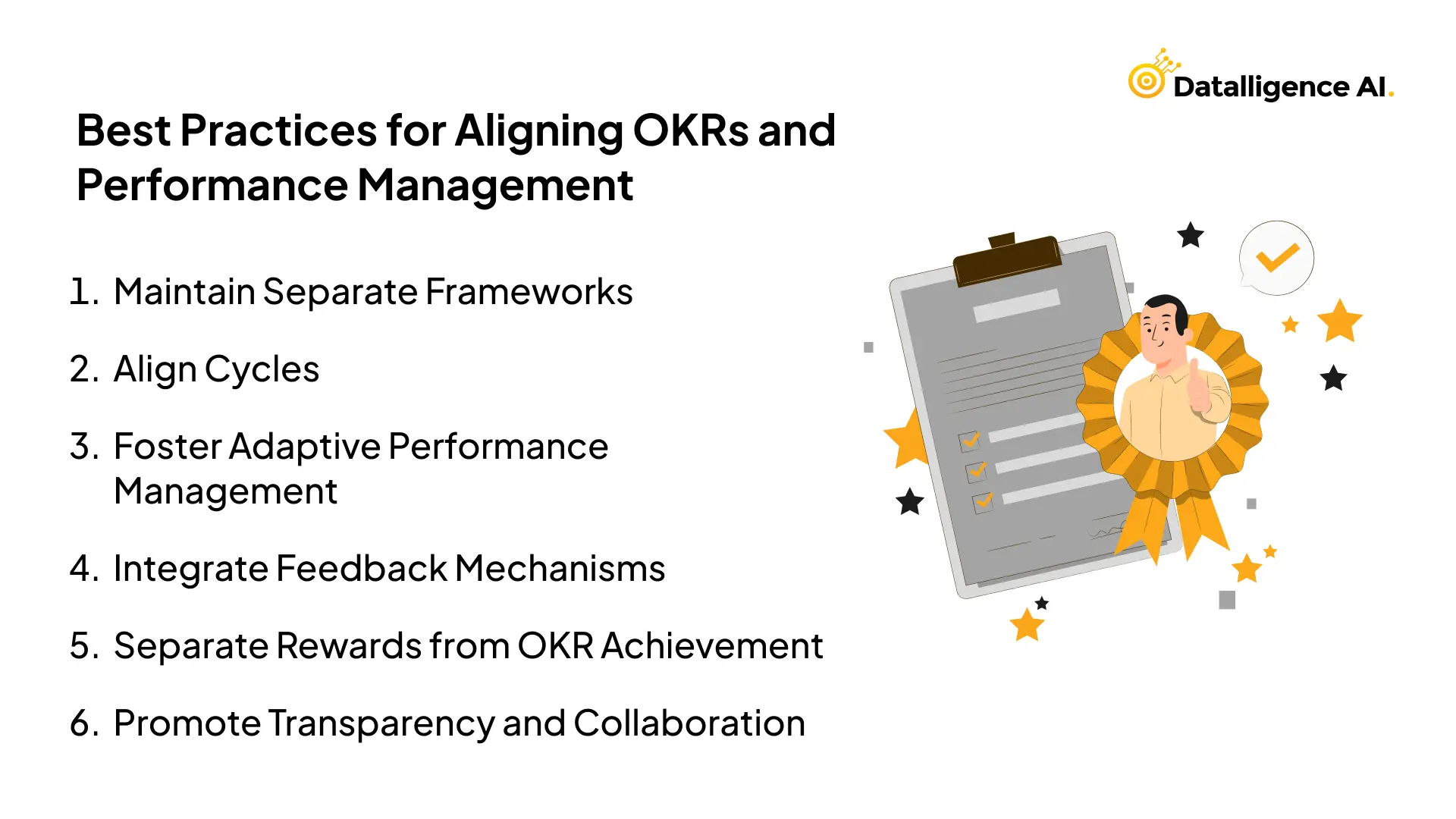In the rapidly evolving landscape of business, organizations are continually seeking methods to enhance efficiency, accountability, and innovation. Two frameworks that have gained prominence in this quest are OKRs and Performance Management. While both aim to drive success, they serve distinct purposes and operate differently. This blog explores how OKRs and performance management work together, highlighting their differences, best practices for alignment, and the potential pitfalls of conflating the two.
Table of Contents
What Are OKRs?
OKRs are a goal-setting framework that helps organizations define objectives and track their outcomes. The structure consists of:
Objectives: Qualitative descriptions of what an organization aims to achieve.
Key Results: Quantitative metrics that measure progress toward these objectives.
The primary focus of OKRs is on ambitious stretch goals that encourage teams to innovate and collaborate. Unlike traditional goal-setting methods, OKRs are adaptable; they can be modified as organizational needs change, fostering a culture of agility and responsiveness.
What Is Performance Management?
Performance management is a systematic process aimed at improving organizational performance by aligning individual employee goals with broader business objectives. The performance management cycle typically includes four stages:
Planning: Setting individual goals in collaboration with employees.
Monitoring: Regularly tracking progress through check-ins.
Reviewing: Evaluating performance at the end of a defined period.
Rewarding: Compensating employees based on their achievements.
This process is more structured and often involves a top-down approach, focusing on individual contributions rather than collective outcomes.
Key Differences Between OKRs and Performance Management
Understanding the differences between OKRs and performance management is crucial for effectively leveraging both frameworks:
Scope
OKRs emphasize collective impact and outcomes, often set at the team or organizational level.
Performance Management focuses on individual tasks and contributions, making it essential for fair evaluations.
Transparency
OKRs promote visibility across the organization, encouraging employees to share progress openly.
Performance Management tends to be less transparent, often relying on hierarchical assessments.
Innovation vs. Attainment
OKRs inspire teams to pursue ambitious goals, fostering innovation.
Performance Management often prioritizes meeting established targets, which can lead to risk-averse behavior.
Timeframe
OKRs operate on shorter cycles (typically quarterly), allowing for rapid adaptation.
Performance Management follows longer cycles (annually or bi-annually), which can stifle agility.
Collaboration
OKRs require collaboration among team members to achieve shared goals.
Performance Management evaluates individual performance independently.
Best Practices for Aligning OKRs and Performance Management

To harness the strengths of both frameworks without falling into common pitfalls, consider the following best practices:
1. Maintain Separate Frameworks
Keep OKRs and performance management as distinct processes
Use OKRs for setting ambitious team goals.
Utilize performance management for evaluating individual contributions.
2. Align Cycles
While keeping them separate, ensure that the timing of both frameworks aligns:
Set quarterly OKR cycles that coincide with regular performance check-ins.
Use insights from performance reviews to inform future OKR setting.
3. Foster Adaptive Performance Management
Adopt an adaptive approach to performance management that accommodates changes in organizational priorities:
Encourage flexibility in individual goals based on evolving team objectives.
Regularly incorporate feedback loops that allow for real-time adjustments.
4. Integrate Feedback Mechanisms
Ensure that feedback during performance reviews references organizational OKRs:
Highlight how individual contributions impact team objectives.
Encourage discussions around how personal goals align with broader company aims.
5. Separate Rewards from OKR Achievement
Avoid linking compensation directly to OKR progress:
Recognize achievements based on overall contributions rather than specific metrics.
Foster a culture where innovation is rewarded independently of immediate results.
6. Promote Transparency and Collaboration
Encourage open communication about both frameworks:
Share progress on OKRs across teams to foster accountability.
Discuss individual performance in the context of team success during reviews.
Conclusion
Integrating OKRs with performance management presents a unique opportunity for organizations aiming to enhance both accountability and innovation. By understanding their distinct roles and implementing best practices for alignment, companies can drive success without compromising the integrity or effectiveness of either framework. Embracing this balanced approach not only optimizes employee engagement but also positions organizations for sustained growth in an increasingly competitive landscape.











